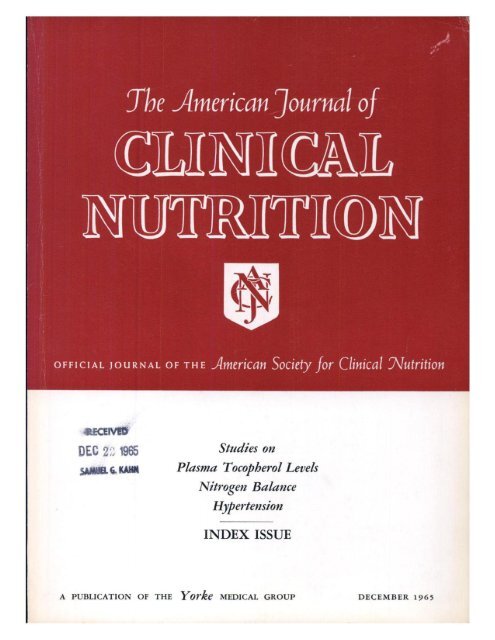胎儿发育相关妊娠并发症与后续母乳喂养持续时间和母乳产量指标的前瞻性关联。
IF 6.5
1区 医学
Q1 NUTRITION & DIETETICS
引用次数: 0
摘要
背景:哺乳期乳房的发育贯穿整个孕期。妊娠并发症导致胎儿发育不良是否会影响母乳喂养的成功率,目前尚不清楚:我们研究了与胎儿生长相关的妊娠并发症是否与较早停止母乳喂养以及母乳中乳产量低的生物标志物浓度的变化有关:我们使用了新加坡健康成长(GUSTO)研究(n=954)的数据。我们获得了 180 个母婴双亲在产后 3 周的母乳中蛋白质、乳糖、柠檬酸盐、钠、钾和锌的浓度。我们研究了胎儿生长指标(包括小于胎龄儿(SGA)(第 90 百分位数)或妊娠高血压疾病(HDP))与(i)停止母乳喂养风险(Cox 回归)和(ii)母乳成分浓度(加权线性回归)之间的关系:结果:在对母亲教育程度、吸烟情况、母乳喂养意愿和孕前体重指数进行调整后,与无并发症妊娠的母亲相比,分娩 SGA 婴儿和患有 HDP 的母亲更有可能缩短母乳喂养时间(调整后的危险比 [95% CI]:1.45 [1.11,1.11 [1.11,1.11]):分别为 1.45 [1.11, 1.89] 和 1.61 [1.14, 2.29]);FGD 和 UAR 的相关性不显著。SGA与母乳生物标志物的浓度无关,但与无并发症妊娠的参与者相比,HDP患者的母乳含锌浓度较低(调整后的β系数[95% CI]:-0.56 mg/L [-1.08, -0.04]):结论:HDP 患者和 SGA 婴儿的母乳喂养时间往往较短;但是,只有 HDP 似乎与母乳产量受损的生物标志物有关。需要进一步的研究和支持,以帮助 HDP 和 SGA 患者实现母乳喂养目标。该研究已注册为 NCT01174875,可在 https://clinicaltrials.gov/study/NCT01174875 上查阅。本文章由计算机程序翻译,如有差异,请以英文原文为准。
The prospective associations of fetal growth-related pregnancy complications with subsequent breastfeeding duration and markers of human milk production
Background
The development of the breast for lactation occurs throughout pregnancy. It is unknown whether pregnancy complications resulting in poor fetal growth can affect breastfeeding (BF) success.
Objectives
We examined whether fetal growth-related pregnancy complications were associated with earlier BF cessation and changes in the concentrations of human milk biomarkers of low milk production.
Methods
We used data from the Growing Up in Singapore Toward healthy Outcomes study (n = 954). Human milk concentrations of protein, lactose, citrate, sodium, potassium, and zinc at 3 wk postpartum were available for 180 mother-infant dyads. We examined the associations of fetal growth measures, including term infants born small-for-gestational-age (SGA) (<10th percentile), pregnancies complicated by fetal growth deceleration (second to third trimester fetal growth dropped between major centiles), elevated umbilical artery resistance (>90th percentile) or hypertensive disorders of pregnancy (HDP) with 1) risk of ceasing BF (Cox regression) and 2) concentrations of human milk components (weighted linear regression).
Results
Adjusting for maternal education, smoking exposure, BF intentions, and prepregnancy BMI (in kg/m2), individuals who delivered SGA infants and those with HDP were more likely to breastfeed for a shorter duration when compared to those with uncomplicated pregnancies {adjusted hazard ratio [95% confidence interval (CI)]: 1.45 (1.11, 1.89) and 1.61 (1.14, 2.29), respectively}; associations were nonsignificant for fetal growth deceleration and umbilical artery resistance. SGA was not associated with concentrations of human milk biomarkers, but compared to participants with uncomplicated pregnancies, milk produced by those with HDP contained lower zinc concentrations [adjusted β coefficient (95% CI): –0.56 mg/L (–1.08, –0.04) mg/L].
Conclusions
Individuals with HDP and those with SGA infants tend to breastfeed for a shorter duration; however, only HDP appear to be associated with biomarkers of compromised milk production. Further research and support are needed to help individuals with HDP and SGA achieve their BF goals.
This trial was registered at clinicaltrials.gov as NCT01174875.
求助全文
通过发布文献求助,成功后即可免费获取论文全文。
去求助
来源期刊
CiteScore
12.40
自引率
4.20%
发文量
332
审稿时长
38 days
期刊介绍:
American Journal of Clinical Nutrition is recognized as the most highly rated peer-reviewed, primary research journal in nutrition and dietetics.It focuses on publishing the latest research on various topics in nutrition, including but not limited to obesity, vitamins and minerals, nutrition and disease, and energy metabolism.
Purpose:
The purpose of AJCN is to:
Publish original research studies relevant to human and clinical nutrition.
Consider well-controlled clinical studies describing scientific mechanisms, efficacy, and safety of dietary interventions in the context of disease prevention or health benefits.
Encourage public health and epidemiologic studies relevant to human nutrition.
Promote innovative investigations of nutritional questions employing epigenetic, genomic, proteomic, and metabolomic approaches.
Include solicited editorials, book reviews, solicited or unsolicited review articles, invited controversy position papers, and letters to the Editor related to prior AJCN articles.
Peer Review Process:
All submitted material with scientific content undergoes peer review by the Editors or their designees before acceptance for publication.

 求助内容:
求助内容: 应助结果提醒方式:
应助结果提醒方式:


